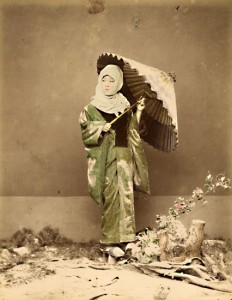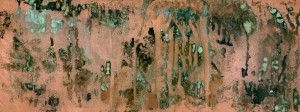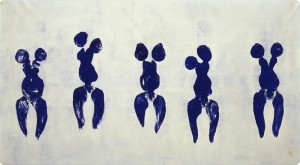Last time, I spoke about Japanese photography painters. These terms are surprisingly new to me considering I’ve read many photography magazine but none of them mentioned these innovating styles. Like George Melies, these pioneering “color photographers” are the ones who proved photographs can be colorful as well.
War photographer Felice Beato was one of the first photographers who introduced journalist photography. He shot and reserved hundreds of rare war photographs from the east where and when the Qings still reluctantly ruling China, including the Opium war between British and Munching China. Later before he settled in Burma, he opened a photography studio in Japan, teaching Japanese citizen to learn photography. And among these disciples, there are Kusakabe Kimbei and T. Enami.
Felice Beato captured a variety of Japan during the Meiji period. He was permitted to shoot many of the unforeseen Samurai Culture, reserving the image of the real Samurais and Japanese soldier, and introducing this little country beside China to the Westerners. Therefore, the viewers felt like tourists, observing Japan as a foreigner, just like Beato.
Kusakabe Kimbei’s worked in a different style compared to Beato. As a local photographer, he mainly explored the world of Japan’s female, including the geishas. Kimbei used plenty of color to create a lively atmosphere of geishas’ dancing yet with the same techniques, he depicted various woman in their unique characteristics, such as a mother was painted green as a soothing character, a young woman with pink pigments to embrace her youth.
T. Enami or Nobukuni Enami, also captured the life of Japanese, but as a local. Through the lens of Enami, viewers are able to see the daily life of Meiji’s Japan as Enami shows not only the famous samurais and geishas but common citizens as well, giving us a glance of the working society.
As you can see, the three photograph painters used almost the same blue in their photographs, yet they depicted different environment and meaning in their photographs’ characters. Such as the serenity around Mt. Fuji, the symbol of honor in a samurai towards his master, the commonness in working labors, and even the intelligence of a writing woman.
Even depicting almost the same theme, you can see the different expressions through the use of color. Their motto was not recreate realistic colorization but sending subtle messages to people who view the photographs. Thus they didn’t colorize the skins and unnecessary items. A little color altering can go a long way.
Inspired by their work, I combine the motives I had from the previous and attempted to colorized my photos in different possible ways. In the meantime, after some research I finally found a color wheel that simply summarized how we have been using color to express different emotions and environments.
 With the help of Photoshop, I am able to create a few colorization style by selecting different layering of my pure colors. These methods included layering a portion of B&W photos with semi-transparent color. (Sneak peak!)
With the help of Photoshop, I am able to create a few colorization style by selecting different layering of my pure colors. These methods included layering a portion of B&W photos with semi-transparent color. (Sneak peak!)
Or tinting them entirely with the hue to create a film style from the 60s. Movies in the 60s tends to tint their whole scene into certain color to express atmospheric tension, before color correcter was invented.
By color correcting the photo’s, we can still see the original colors, but the tint can be seen as well. This is what movies nowadays usually do, but in a more subtle way.
The color scheme used in film has to be created using real props with similar colors and software editing. Since I can’t do that much during the production, I figured why not express my concept in an eye-catching way by covering the details in the same color. This way, viewers can see the colors far ways and able to capture the details when they’re near to it.
Also, I tried to recreate the effects of the mentioned photograph painters. This effects only show color of the key element in the photo, providing each of their own meaning in the image.
Lastly, the pictures below are my journal’s snapshot showing my thought process. Don’t worry if you can’t recognized my handwriting. I’ll type them in my next post when the final results are uploaded as well.


 Adaptable + Stubborn = ME, a lucky sonofagun that miraculously met great friends and survived.
Adaptable + Stubborn = ME, a lucky sonofagun that miraculously met great friends and survived.


 Thoughtful (In any aspect) – Procrastination = BETTER ME, an anti-comfort person, at least willing to be defy comfort.
Thoughtful (In any aspect) – Procrastination = BETTER ME, an anti-comfort person, at least willing to be defy comfort.


 Creative x Experienced = IDEAL ME, standing out in an extraordinary way, with what I am, what I do, and what I left.
Creative x Experienced = IDEAL ME, standing out in an extraordinary way, with what I am, what I do, and what I left.
 Skilled – Stubborn = ME IN 5 YEARS. Freed from my limitation, with infinite possibilities awaits.
Skilled – Stubborn = ME IN 5 YEARS. Freed from my limitation, with infinite possibilities awaits.
[To be continued…….]























